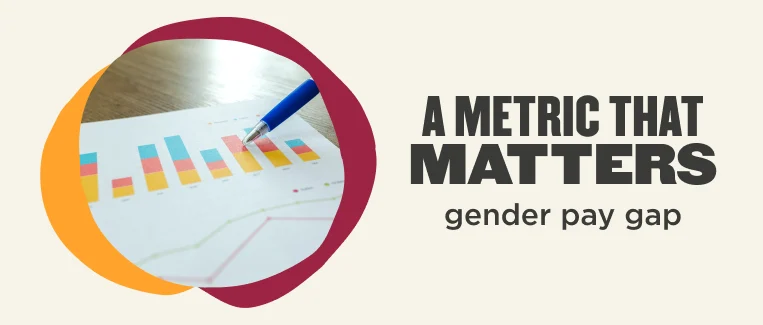No single compensation leader or HR professional can solve the gender pay gap, which is a cross-industry issue. We are, however, all responsible for our own organizations, and by working independently, we can together begin to overcome what has become a global systemic problem.
To address the gender pay gap, we need to take a close look at the composition of our organizations and the disparities in title, seniority, and compensation that may be rooted in gender expression—and then take concrete steps to rectify these differences.
Defining and calculating the gender pay gap
The gender pay gap is the difference in compensation between genders represented in your workplace. The implications of the gender pay gap are immediate (current salary), cumulative (total lifelong losses), and benefits-related (non-monetary differences).
To calculate the gender pay gap, you’ll split your workforce into gender identification groups, adding up their total salaries, and calculating the media. Once you have those, you can compare each groups’ numbers and calculate the per-dollar difference. This percentage represents your organization’s current pay gap.
The calculation will look like this:
[Gender group A median salary] : [Gender group B median salary] = X/dollar
X = percentage gap
To calculate a multi-gender (more than two genders) gap, your best bet is to compare the groups against each other in two-part ratios and to average out the differences. For example,
[Gender group A median salary] : [Gender group B median salary] = X/dollar
[Gender group A median salary] : [Gender group C median salary] = Y/dollar
[Gender group B median salary] : [Gender group C median salary] = Z/dollar
XY average = A:B gap
XZ average: A:C gap
YZ gap: B:C gap
Seeing these gaps represented by percentage will help you understand implicit and explicit differences in how your organizational culture and policies apply to different gender groups.
In the United States, the gender pay gap between men and women currently stands at 16%—meaning women earn 84 cents for every dollar. This is influenced by many factors but, at the end of the day, women earn significantly less than men for the same output.
Addressing the gender pay gap in your compensation management
The pay gap starts and ends with your organization’s compensation management.
Once you have the numbers in front of you, your only option is to equalize: to raise payment for underpaid groups in order to match the highest-paid group. Payment is connected to many factors aside from gender identity, of course, but the gender pay gap will give you insight into other possible problems in your organization, such as implicit (or explicit) discrimination in hiring and promotions.
Recommended For Further Reading
Legal and cultural implications of the gender pay gap
Any organization with a gender pay gap is vulnerable to a workplace discrimination lawsuit. Global organizations including Google, Twitter, Nike, Goldman Sachs, Disney, Uber, and Oracle have recently been sued by thousands of women and other individuals from underrepresented gender groups for millions of dollars.
These gaps lead the groups on the losing side of the calculation to feel undervalued and overworked—and rightfully so. The reason our pay is considered “compensation” is because it’s compensation for our time and output, and is ultimately (hopefully) connected to those factors. When individuals and groups are being compensated differently for the same time and output, it can be assumed that the organization sees certain individuals and groups as more valuable than others. As George Orwell wrote in Animal Farm, everyone is equal, but some are more equal than others.


